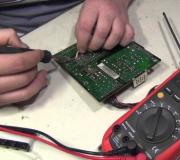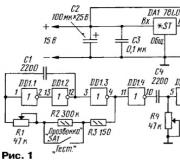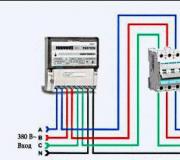How to solve the problem could not load the plugin. Why can't I launch the extension in Yandex browser and how to solve the problem. th way. Disable unnecessary plugins
When opening media content in Yandex.Browser, users may encounter a notification: "The plugin could not be loaded." What to do in this case, and how to view the media page without errors, read within the framework of this article.
What is this plugin?
Flash Player is used to work with media files. Chromium-based browsers (Yandex Browser belongs to them) use the built-in Shockwave Flash plugin. Working with the plugin is fully automated, updating Flash Player will not give any results. The only thing the user can do is to disable or enable his work in the browser.
Turning on
The "failed to load plugin" error may appear simply due to the plugin being disabled. To enable it:

Cash and cookie cleaning
There is a possibility that the page after the first load retained its "appearance" in the form when the plugin was disabled. And when the page is refreshed, instead of taking the updated data from the server, Yandex Browser provides the version of this page saved on the computer, "assuming" that no changes have occurred. This is called page caching. To force the Internet browser to re-crawl the page, you need to delete the old references to it:

Advice! If the error persists, try to see if the page is working properly in another Internet browser or on another computer. Perhaps the reason for the error is on the site side. If it does not work only in Yandex Browser,
Some users who have chosen the Opera web browser may encounter problems with online playback of videos and music. If your video does not start playing, the browser stops working, or pop-up windows with error warnings appear, then your system was unable for some reason to load the Flash-Player plugin in Opera.
There are many possible reasons associated with this error. Usage outdated version programs, a hung plug-in, system malfunctions, actions malware- all this can disrupt the correct operation of the online player. This article describes what to do if you encounter a similar problem in Opera.
The first thing to do if the Flash plugin fails to load is to restart the browser. It is quite possible that some tool of the program crashed, as a result of which the usual work was disrupted. If the problem persists after restarting, go to the next step.
Enter "opera: // plugins" into the Opera search bar and press Enter. You will be taken to the configuration page of the connected plugins. Here you need to check if several Flash players are not working at the same time. They can conflict with each other, causing intermittent failures.
In case you have more than one extension working, click on the “Show details” button. You need to leave only one active plug-in (the latest version and preferably without the "NPAPI" mark). Disable the object using the "Disable" button.
Updating and reinstalling Opera
If previous ways did not have a positive effect, you need to try updating your browser. As a rule, it updates itself, but this setting may have been deactivated. In addition, downloading new updates may be prevented by installed antivirus or firewall.
To check the current version of Opera browser, do the following:

If used outdated application and for some reason automatic loading update does not start - you need to reinstall the program:

Reinstall Flash
If all of the above did not help, then the reason lies in problems with Adobe Flash.
- Open "Uninstall Programs" again as described above.
- Find all Flash files(there may be several) and delete one by one.
- Now go to the official plugin download site https://get.adobe.com/en/flashplayer/.
- Click on the Load System Module hyperlink.
- You will be prompted to additionally install some free app, for example, Google chrome... If you don't need it, uncheck the box next to the offer.
- Click Install Now.
- Wait for the process to finish and restart your browser.
Was this article helpful?
Computers are unpredictable machines. All sorts of errors and malfunctions can occur on them. Quite often, users complain that a message appears in the browser - "Failed to load plugin". A similar problem brings a lot of inconvenience and problems. How to deal with this event? What features and nuances of the process are recommended to pay attention to? All this will be discussed further. Even a novice user can correct the situation in just a few minutes.
Update
There are many reasons for this phenomenon. As a rule, users do not think too much about the sources of the error. Failed to load plugin - what should I do?
The first advice that users give each other is to reinstall or update the problematic browser. Often, this is the way to fix all the problems. After all, the causes of failures can be damage to the application or the termination of servicing old assemblies.
Failed to load plugin? To update your browser, it is proposed:
- Download the latest version of the application from third-party resources and delete the existing one. Next, initialize the browser.
- Update via application settings. For example, in Chrome, this is done by clicking on the button with 3 dots, clicking on "Settings" - "About browser". A few minutes of waiting - and if there are updates, you will need to click on "Update".
After updating the content, the error should be gone. And if not? Then you can go in other ways.
Disabling plugins
The most common issue under study is encountered when working with Flash Player. The browser says "Failed to load plugin"? It is likely that the user has several versions of Flash Player installed. This causes a plugin conflict. Accordingly, they cannot turn on.
Correcting the situation is not that difficult. It is enough to disable one of the plugins. You will need to abandon the use of what is of the PPAPI type.

Failed to load plugin in Chrome? It is proposed to disable the problematic application as follows:
- Launch a browser.
- Write to the address bar: chrome: // plugins. Press Enter.
- Look at the list of installed plugins. Find the problematic application and click on the "Disable / Disable" button.
- Go to the browser again.
After the actions taken, the error will disappear. The process can be carried out in a similar way in other browsers. To do this, write in the address bar:
- about: plugins - FireFox;
- browser: // plugins - Yandex;
- opera: // plugins - Opera.
However, this technique does not always work. There are a few more secrets that can fix the error.
History and cache
Failed to load plugin? What to do? Chrome or any other browser is not that important. The main thing is that the principles and techniques are the same in all applications.

The next rather successful piece of advice for resolving the bug under study is to clear the browser history and cache. Quite often, numerous temporary files load the program's work. This causes plugins to stop working. And the user can see the inscription - "Failed to load plugin".
Reinstall Flash Player
Failed to load plugin? What to do if all of the above methods did not help, you can use the next effective advice... It helps most of the time.
It is about reinstalling Adobe Flash Player. Before that old version the plugin must be removed. Installation instructions are reduced to the following algorithm:
- Open the "Plugins" menu in the browser.
- Find Flash Player. Select the appropriate line and click on the image of the trash can ("Delete").
- Go to the official website of the Adobe Flash Player.
- Find the latest version of the application and download it.
- Install the program.
- Reload your browser. Preferably together with a computer.
No more operations are required. As soon as the Flash Player is updated to the latest version, the plugin will work at full capacity.

Viruses
Sometimes a message stating that the browser could not load the plug-in appears when viral infection PC. In these circumstances, the following tips help:
- treatment operating system using antivirus;
- reinstalling the problematic browser and Flash Player;
- updating / reinstalling the operating system.
This is where all the effective methods of dealing with the studied error end. In fact, it is eliminated in a few minutes. It does not pose a serious danger, but such an event causes discomfort to users. From now on, it is clear how to get rid of it.
During the week, there was a problem, the Flash content stopped playing in Chrome version 54.0.2840.99 m .
- Right-click to launch Adobe Flash Player.
- Failed to load plugin.
Solution of errors
The first error can be corrected in two ways:
- Click on an element, right click mouse and select Run plug-in
- To avoid doing this every time, you can allow the player to always start. This will be addressed in Step 2
But with the second problem it will be more complicated, then there will be a description of identifying and fixing the plugin not working properly.
Google offers to check whether the plugin is enabled or not + check the update:
Step 1
First, let's check the browser version, maybe there is an update and the problem will go away by itself:
- In chrome, click on three points (lines), on the right
- Help - about Google browser Chrome. The browser will look for a new version and either update or say You are using the newest Chrome version ... If it doesn't help, then move on.
Step 2
Not relevant, since this functionality has been removed - https://my-chrome.ru/2017/03/chrome-57/
Make sure Adobe Flash Player is enabled:
- In the Chrome address bar, type - chrome: // plugins and press Enter
- Top right, click on + More
- Are looking for Adobe flash player
- We look, if there is only one plugin and is enabled, then we go to the next step, if there are 2 plugins, then you can try to enable one and turn off the other. Since chrome already has a built-in plug-in, then an additional one is not needed for it, but if you need a new version of the player or there is still some reason, you can download and install the required version from the Adobe website, thus we get 2 of them
Step 3
You can also check the plugin update manually:
- In the address bar we write chrome: // components and press Enter
- Find the line Adobe flash player and click to check for updates, if nothing has changed, then it will be written: Status - Component not updated
Step 4
If at the end of the checks, everything is updated and included, then perhaps this is the case that I had to solve:
- Back to Step 2 Point 3
- We look at the location and copy it
- Close chrome
- Open explorer / my computer and paste the copied location into the address bar, removing the plugin name. That is, the location is C: \ Users \ user \ AppData \ Local \ Google \ Chrome \ User Data \ PepperFlash \ 23.0.0.207 \ pepflashplayer.dll, and in the address bar, insert C: \ Users \ user \ AppData \ Local \ Google \ Chrome \ User Data \ PepperFlash \ 23.0.0.207 \ (% LOCALAPPDATA% \ Google \ Chrome \ User Data \ PepperFlash \ 23.0.0.207 \) and press - enter
- There should be 3 files in this folder (mine is like this):
- manifest.fingerprint
- manifest.json
- pepflashplayer.dll
In my case, there was no pepflashplayer.dll- this is the Flash Player.
If you also have or do not have enough other file, then go ahead. - Delete all contents of this folder
- Back to Step 3 and do it all over again.
The state will change and should be: Component updated ... I didn’t solve the problem on my computer, and it helped. Simulating this situation on my computer, the plugin did not download for me, if you do the same, then go ahead. - We rise to a higher level - C: \ Users \ user \ AppData \ Local \ Google \ Chrome \ User Data \ PepperFlash
- Delete the folder 23.0.0.207 ... I could not delete the folder, because the system swore that it was open / busy by someone. After rebooting and deleting the folder, you can repeat Clause 7.
The modern Internet is used not only for searching textual information. Various images and videos can be viewed here. Quite often, a situation arises that, having decided to watch a movie, a person stumbles upon strange problems.
What is a plugin?
It is rather difficult to understand the essence of such a question if you do not understand what a plugin is, that is, do not realize what exactly has stopped working.
Plugin is a word borrowed from English. There it is a plug in verb, which can be translated as "to connect". Plugins are software modules that are connected to some kind of main program.
More often than not, people run across "failed to load plugin" when they tried start some kind of video, audio track or some kind of application, like games in social network In contact with. All such programs depend on plugins that become part of the browsers.
What is the cause of the problem?
Of course, if a person is not a highly qualified computer specialist (and even if he is), it is unlikely that it will be possible to find out the exact reason why the plug-in could not load. However, you can consider the most common options.
Usually, if, when trying to turn on the movie, a similar inscription came out, then this indicates that the browser software has not been updated for a long time... As a rule, such updates happen on their own, but only if this feature has not been manually disabled. Thus, if there have been no updates for a very long time, the plugin may become too old to work with modern programs.
This does not mean at all that software for several years now. Plugins and other similar components can become outdated in just two to three months. However, this is far from the only cause of problems. Sometimes they don't depend on the user at all, especially if it comes O Opera browser... It is known to be unstable with respect to plugin functionality.
Also, the root of the problem may be in clogging random access memory and deterioration of the computer's performance.

What if the plugin fails to load?
Based on the possible causes of the problem, you can understand what action needs to be taken to resolve the problem.
First of all, you can just try use another browser... For example, if the video is not included in Opera, then it is worth working in Google Chrome, however, this does not solve the problem of an immediate broken plugin.
- You need to go to the settings of your browser, in in this case- Opera.
- There it is necessary to select the item "About the program".
- In this field they will write which version of the browser is used on this moment... If it is not the latest, you will be prompted to install the update.
- It is enough to agree to the installation and everything will be ready.
If you cannot find the settings, then you can download the latest version from the official website of the browser. To do this, it is enough to type in any search engine the name of the browser, and the first link will lead to the official site.

Working with the plugin
If new browser did not help, or it was originally latest version, then you can try to fix the work of the plugin.
- To do this, in the browser settings, you need to find the "Plugins" item.
- At the top right, there will be a Show Details button.
- By clicking on it, you need to find the Flash Player plugin, which is of the PPAPI type.
- The plugin must be turned off, and then turn off the browser itself and turn it on again.
Another important factor is where the plugin stopped working. If this happens only on one specific site, then clearing the cache can help.
How do I clear the cache? The easiest way to do this is using a special free software CCleaner, which will not only clear the cache, but also delete cookies and others unnecessary files... As a rule, one cleaning of the computer with this program is enough to restore the work of plug-ins.

What if all else fails?
There are the most critical situations when none of the above methods has been able to solve the problem. In this case, you will have to reinstallAdobe flash player.
First of all, you need to remove the old version of the program from your computer. This is done using the Control Panel. After that, all that remains is to download newest version from the official website of the developer. To find it, just write the name of Adobe Flash Player in the search field.
At the end of the installation, the program will offer automatic updates. You can choose the option with a preliminary warning about the need to update, but you should not completely disable them, otherwise the problem will quickly come back.




